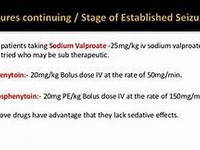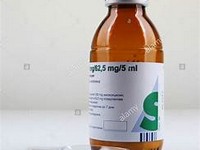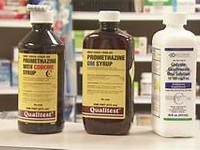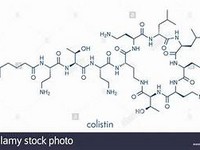Fosphenytoin sodium

Fosphenytoin sodium
CLINICAL USE
Control of status epilepticus Seizures associated with neurosurgery or head injury when oral phenytoin is not possible
DOSE IN NORMAL RENAL FUNCTION
Status epilepticus: Treatment: 20 mg PE/kg (loading dose) —by
IV infusion
Maintenance: 4–5 mg PE/kg daily in —1–2 divided dosesProphylaxis or treatment of seizures: 10– 15 mg PE/kg by
IV infusion
; then convert to phenytoin or 4–5 mg PE/kg daily in 1–2 divided doses
PHARMACOKINETICS
Molecular weight :406.2 %Protein binding :95–99 %Excreted unchanged in urine : 1–5 Volume of distribution (L/kg) :4.3–10.8 litreshalf-life – normal/ESRD (hrs) :18.9 (IV), 41.2 (IM)/Unchanged DOSE IN RENAL IMPAIRMENT
GFR (mL/MIN)
20 to 50 : Reduce dose or rate by 10–25% and monitor carefully (except for status epilepticus) 10 to 20 : Reduce dose or rate by 10–25% and monitor carefully (except for status epilepticus) <10 : Reduce dose or rate by 10–25% and monitor carefully (except for status epilepticus) DOSE IN PATIENTS UNDERGOING RENAL REPLACEMENT THERAPIES
CAPD :Unlikely to be dialysed. Dose as for GFR <10 mL/min HD :Not dialysed. Dose as for GFR <10 mL/minHDF/high flux :Unlikely to be dialysed. Dose as for GFR <10 mL/minCAV/VVHD :Not dialysed. Dose as for GFR 10 to 20 mL/min IMPORTANT DRUG INTERACTIONS
Potentially hazardous interactions with other drugsAnalgesics: enhanced effect with NSAIDs; metabolism of methadone acceleratedAnti-arrhythmics: increased concentration with amiodarone; concentration of disopyramide and mexiletine reducedAntibacterials: level increased by clarithromycin, chloramphenicol, isoniazid, metronidazole, co-trimoxazole and trimethoprim (+ antifolate effect); concentration increased or decreased by ciprofloxacin; concentration of doxycycline and telithromycin reduced; concentration reduced by rifampicinAnticoagulants: increased metabolism of coumarins (reduced effect but also reports of enhancement)Antidepressants: MAOIs, SSRIs and tricyclics antagonise anticonvulsant effect, concentration increased by fluoxetine and fluvoxamine; reduced concentration of mianserin, mirtazepine, paroxetine and possibly tricyclics; concentration reduced by St John’s wort – avoidAnti-epileptics: concentration of both drugs reduced with carbamazepine; concentration may also be increased by carbamazepine, ethosuximide, oxcarbazepine and topiramate; possibly reduced concentration of ethosuximide, active oxcarbazepine metabolite, primidone (but active metabolite increased), topiramate and valproate; reduced concentration of lamotrigine, tiagabine and zonisamide; primidone and valproate may alter concentration; concentration reduced by vigabatrin Antifungals: reduced concentration of ketoconazole, itraconazole, posaconazole, voriconazole and possibly caspofungin – avoid with itraconazole, increase voriconazole dose and possibly caspofungin; levels increased by fluconazole, miconazole and voriconazoleAntimalarials: antagonise anticonvulsant effect; increased antifolate effect with pyrimethamineAntipsychotics: antagonise anticonvulsant effect; aripiprazole concentration possibly reduced – increase aripiprazole dose; Fosphenytoin sodium.fOSPHeNYtOIN SODIUM 335metabolism of clozapine, quetiapine and sertindole increased Calcium-channel blockers: levels increased by diltiazem; reduced concentration of diltiazem, felodipine, isradipine, nisoldipine and verapamil and possibly dihydropyridines, nicardipine and nifedipineCiclosporin: reduced ciclosporin levels Corticosteroids: metabolism accelerated (effect reduced)Cytotoxics: metabolism inhibited by fluorouracil; increased antifolate effect with methotrexate; reduced phenytoin absorption; reduced concentration of busulfan, etoposide and imatinib – avoid with imatinibDisulfiram: levels of phenytoin increased Diuretics: concentration of eplerenone reduced – avoid concomitant use; increased risk of osteomalacia with carbonic anhydrase inhibitors; antagonises effect of furosemideOestrogens and progestogens: metabolism increased (reduced contraceptive effect)Sulfinpyrazone: concentration increased by sulfinpyrazone Tacrolimus: reduced tacrolimus levels Theophylline: concentration of both drugs reduced Ulcer-healing drugs: metabolism inhibited by cimetidine; absorption reduced by sucralfate; enhanced effect with esomeprazole and omeprazole ADMINISTRATION
Reconstition
– Route
IV, IM Rate of Administration
Status epilepticus : 100–150 mg PE/min Treatment and prophylaxis of seizures: 50–100 mg PE/minComments
Dilute further when using for IV infusion
with sodium chloride 0.9% or glucose 5% to 1.5–25 mg PE/mL OTHER INFORMATION
75 mg of fosphenytoin sodium is equivalent to 50 mg of phenytoin0.037 mmol of phosphate/mg of fosphenytoinDecreased protein binding in renal failure Monitor ECG, BP and respiratory function during infusionWhen substituting IV, IM use same dose and frequency as for oral phenytoin, administer at a rate of 50–100 mg PE/minMay increase blood glucose in diabetic patientsSome is dialysed out, as not all PE is protein-boundHalf-life of fosphenytoin to phenytoin is 15 minutes; more rapid in renal failure due to reduced protein binding.
See how to identify renal failure stages according to GFR calculation
See how to diagnose irreversible renal disease
Home









